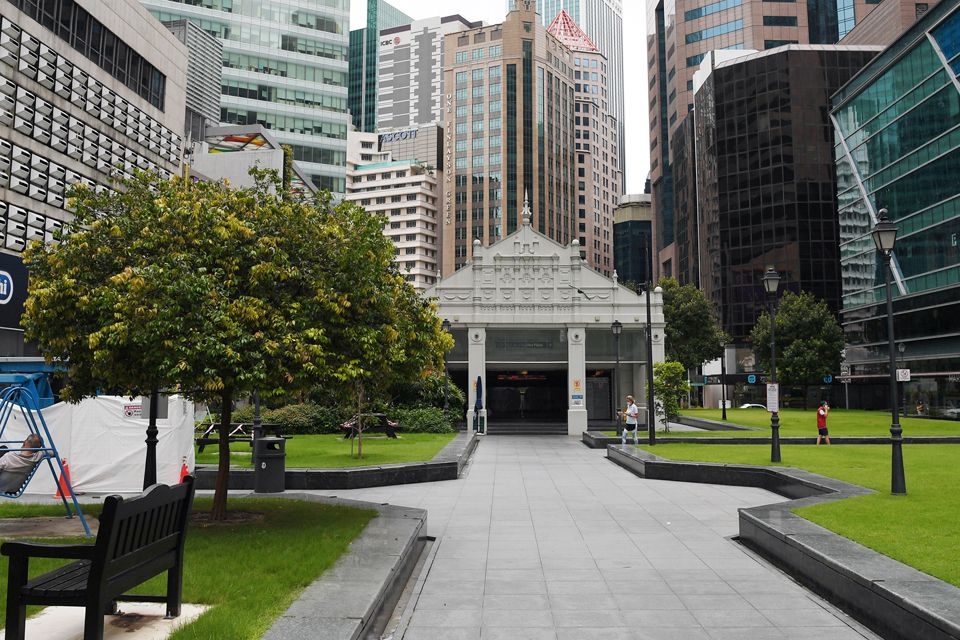Is it the calm before the storm for office market?

RENTALS of office space in Singapore's central region turned a corner in the first quarter this year.
It rose 3.3 per cent quarter on quarter, versus a 3.5 per cent decline in Q4 2020, data from the Urban Redevelopment Authority showed.
But those turning bullish on the office sector may need to take pause. There are structural changes brought on by Covid-19 that have yet to show up in the numbers.
One question for office landlords is whether the balance of the working week in the next couple of years will lean towards being spent in the office or elsewhere.
Will we eventually get back to working five days in the office as was the norm in pre-pandemic days?
Work place restrictions were relaxed early last month, but with a recent rise in Covid-19 community cases, it is back to work-from-home mode as the default for workplaces.
As more people get vaccinated in Singapore, workplace restrictions can potentially be relaxed even if occasional spikes in cases may lead to curbs being reinstated temporarily.
In its Q1 business update, Suntec Reit's manager said "physical office will remain relevant as companies value the need to build corporate culture and foster employee collaboration".
DBS's CEO Piyush Gupta said at its recent annual general meeting that "having employees being together physically helps to create the culture and soul of the company and promotes innovation".
Co-workers interacting in person may be critical to build bonds and generate ideas.
But physical interactions need not take place in an office setting.
Hotels, bars, eateries and social clubs among others can pivot to provide venues that are conducive for co-workers to discuss key matters or brainstorm ideas.
Could physical staff retreats on a quarterly basis at inspiring locations suffice to build corporate culture? Perhaps. Traditional office landlords will be watching out for non-office players, who may encroach by offering interesting venues for physical meetings and team building activities.
For perspective, in the last few years, structural drivers for the office market have been strong. Singapore is growing as a hub for businesses serving South-east Asia and Asia. More jobs are being filled by knowledge workers who use office space.
The share of professionals, managers, executives and technicians among employed residents rose to 59.9 per cent in 2020 versus 52.5 per cent in 2010. The share of degree holders in the resident labour force jumped to 39 per cent in 2020 from 28 per cent in 2010.
Cyclical factors look favourable too. The Ministry of Trade and Industry forecasts growth in Singapore's gross domestic product of 4 to 6 per cent for 2021, reversing the 5.4 per cent fall last year. The Monetary Authority of Singapore expects economic growth to exceed 6 per cent this year, barring a significant setback in activity from a weaker recovery of the global economy or surge in locally transmitted cases.
And while banks are giving up office space, central business district (CBD) offices have seen demand from technology firms and other businesses. DBS Research estimates that the total return of space by major financial institutions in Singapore of about 0.5 million sq ft is "manageable" for the office market.
As vaccination efforts progress and the local economy rebounds, some analysts project that the office rental market will bottom out this year before starting to recover in 2022.
As it is, Keppel Reit, which owns Grade A office assets in the CBD, posted average signing rent for Singapore office leases concluded in Q1 2021 that is higher than average rents of its Singapore office leases expiring in 2021 and 2022.
CBD office landlords are helped too by a lean new supply pipeline.
Net new supply in the CBD is averaging around 0.7 million square feet per annum over 2021-2025, which is below the annual average of one million sq ft in the preceding five years.
The estimated new supply is also below the average annual net demand of 0.9 million sq ft for 2016-2020.
Still, remote working has thrown up new structural issues. Sure, some managers have been uncomfortable with not seeing their staff in person. Staff are also mentally worn out from spending too much time in front of screens; many have problems drawing lines between work and rest, too.
But humans can adapt. Work protocols and laws can improve to address the drawbacks of remote working.
Technology firms have already gained from this trend. Revenue from Nasdaq-listed Zoom Video Communications more than quadrupled from a year ago to US$2.65 billion for the fiscal year ended Jan 31, 2021.
At the same time, students in school today are more technologically savvy than the previous generations. They are also increasingly familiar with online learning.
That means workers of the future may want to be able to work at any time and from anywhere, just as consumers want to shop at any time and from anywhere.
Reducing commutes to the office can also aid the fight against climate change.
Given these factors, many businesses will likely embrace elements of remote working with ensuing decline in aggregate office space needs.
In Singapore, the impact may be mitigated by new businesses setting up or existing ones expanding operations. Nonetheless, office landlords will have to raise their game. They'll have to compete by investing to improve their offerings as they fight for tenants who will gravitate towards higher quality office space.
New products coming up such as Guoco Midtown and CapitaSpring are buoyed by signing up tenants when economies are recovering and Singapore is being seen as effective in its handling of the pandemic.
Investor appetite for CBD office buildings remains intact. Late last month, PGIM Real Estate announced the purchase of 108 Robinson Road for US$107 million.
But if the role of the physical office is called into question, investors should ask if office capitalisation rates would expand and consequently, see values erode.
Cap rates are a way to measure the multiple that a property asset is supposed to generate in earnings.
It is one way investors assess the potential return to be made on buying a property, after considering other risks such as occupancy levels and credit-worthiness of tenants.
Because cap rates are derived by dividing net operating income by property value, a property with a lower cap rate should generate a higher purchase price.
Currently, cap rates used to value office assets are often lower than for any other property asset class.
As at end-2020, the capitalisation rates for CapitaLand Integrated Commercial Trust's Singapore office assets ranged from 3.45 per cent to 3.9 per cent, versus 4.5 per cent to 6.2 per cent for its retail assets.
So an office building is expected to fetch a higher capital value if it generates the same net property income as a retail or business park asset.
But that might not be in the future.
The tug-of-war continues as Singapore's position as a business hub wrestles with the future of remote work. Dangers lurk for office landlords.




